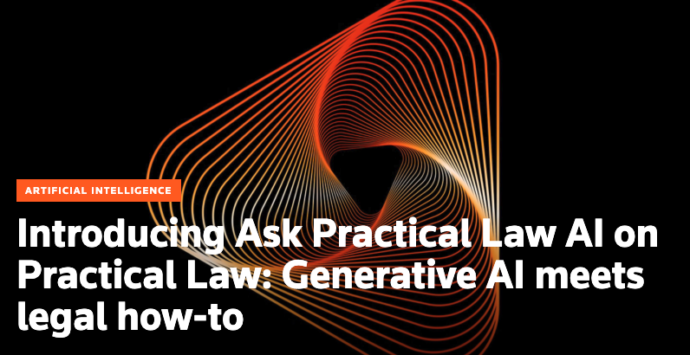Contracts are crucial legal agreements shaping relationships in various aspects of life, defining obligations, and offering legal protection.
Legal terms • contract
This blog is part of the “Contract Law” series.
Jump to:
| Key elements of a contract |
| Different types of contracts |
| What happens when a contract is breached? |
| Special contract considerations |
Contracts are the foundation of many personal and professional arrangements. One would be hard-pressed to find a legal pro who is not expected to deal with the documents in at least some capacity, and moreover, it is also very common for the non-legal community to enter into these arrangements regularly with respect to everything from renting an apartment to purchasing insurance.
Contracts, and the laws associated with their governance, are important to understand as they are the bedrock of the relationships between companies, employees, clients, and their associates. Knowing exactly what contracts are, how they work, and understanding their various roles in our day-to-day lives, will help law firms and businesses create better, more effective documents.
To better understand the essence of a contract agreement, it is helpful to break down some of the key elements that comprise their common forms. It is equally helpful to consider the different categories they may fall under and parse through some of the particulars of those categories. Here, you will find an overview of those elements and categories along with important helpful resources to create air-tight, effective, and enforceable legal agreements.
First, it will be helpful to define the term and answer the question, “What exactly is a contract?” A contract is a formal, legally binding agreement between two parties. This agreement creates “mutual obligations that are enforceable by law.”
In most cases, contact law calls for this agreement to be expressed with an offer, and then several other elements must be satisfied to complete the process. A few of the many different types of relationships a contract might be used to create include:
- Mortgage agreements
- Lease agreements
- Online purchases
- Sign-up agreements
- Insurance
- Promissory notes
Key elements of a contract
Legally valid, binding contracts usually have several important facets. The individual elements of a contract can be broken down into six general components. Those components are offer, consideration, acceptance, mutuality, and among others.
- Offer– One party promising to do something, or conversely, promising to refrain from doing a particular action
- Acceptance– The unambiguous nature by which an agreement is solidified. This may be done verbally, or through performance or deed
- Awareness– Both parties acknowledge the contract agreement exists
- Consideration– When something of value is offered in exchange for the above-stated action or inaction; the value that induces the parties to enter into the contract
- Capacity– Individuals must have the ability to reasonably understand what entering a contract agreement means; individuals compromised by, for example, alcohol, may be found to lack capacity with respect to contract law
- Legality– Also referred to as mutuality, valid contracts must fall in line with existing laws
Different types of contracts
There are several different types of contracts, and those types vary based on the details of the relationship between the parties involved. Different contract types create different relationship dynamics. Below is a list of some common forms a contract might take, and some of the ways those contracts can shape the relationship between parties.
Some common contract genres are as follows:
- Adhesion– These are negotiated between parties of uneven bargaining strength
- Unilateral– When one entity makes a promise to another based on a given set of circumstances taking place
- Bilateral– When both parties make a promise in order to fulfill the terms of a given agreement
- Aleatory– An agreement in which the effects depend on an uncertain event
- Fixed-Price– An agreement between a buyer and seller who each agree in advance on what constitutes full payment for services and supplies provided in a contract
- Cost-Reimbursement– Used when the amount of work cannot be described in definite terms, or it is difficult to estimate the costs with any degree of reasonable certainty
 | White Paper Smarter about Contracts: Bringing a system of intelligence to contract lifecycle management |
What happens when a contract is breached?
Unfortunately, sometimes parties challenge the existence of a valid contract or the specific terms and clauses included in the agreement. Perhaps there are concerns with the drafting process, or perhaps there were concerns with the way a contract agreement was negotiated.
Parties frequently accuse one another of misrepresentation with respect to these considerations. When that happens, these disagreements require some form of arbitration or adjudication. Those disagreements can lead to an accusation of a “breach of contract.”
A breach of contract is “a failure, without legal excuse, to perform any promise that forms all or part of the contract. This includes failure to perform in a manner that meets the standards of the industry or the requirements.”
Special contract considerations
Sometimes contract agreements have special considerations or features setting them apart from more common types of contracts. For example, non-disclosure agreements and confidentiality clauses are sometimes included in contract agreements when the information being shared with one or more of the parties is not intended for public consumption.
Depending on the particular set of circumstances surrounding the relationship in question, these additional considerations can be either free-standing, which comes in the form of a non-disclosure agreement, or in the form of clauses included as part of a broader contract agreement.
Other contracts include “indemnification clauses,” which are often included in commercial contracts. These clauses involve the purported indemnifying party agreeing to compensate the other party—this individual is referred to as indemnified—for costs and expenses potentially stemming from the actions of a separate third party.
No matter what type of contract you are planning to draft, it is helpful to consider if a Contract Lifecycle Management system would be beneficial. Drafting contracts is an important function for enterprises of all shapes and sizes, and having a plan in place to manage the contract process from start to finish might be especially useful for entities engaging in new business arrangements, or even ones hoping to more formally codify existing ones. HighQ, for example, is one such management system that has shown to be highly effective for legal professionals looking to increase productivity, collaborate with others, share insights, and engage with colleagues and clients in a more effective manner.
 | Ask Practical Law AI Introducing Ask Practical Law AI on Practical Law: Generative AI meets legal how-to |














